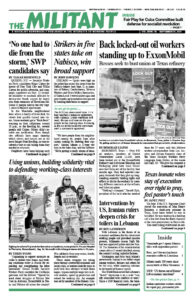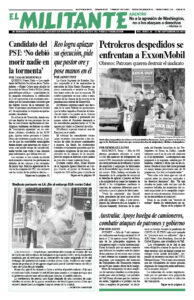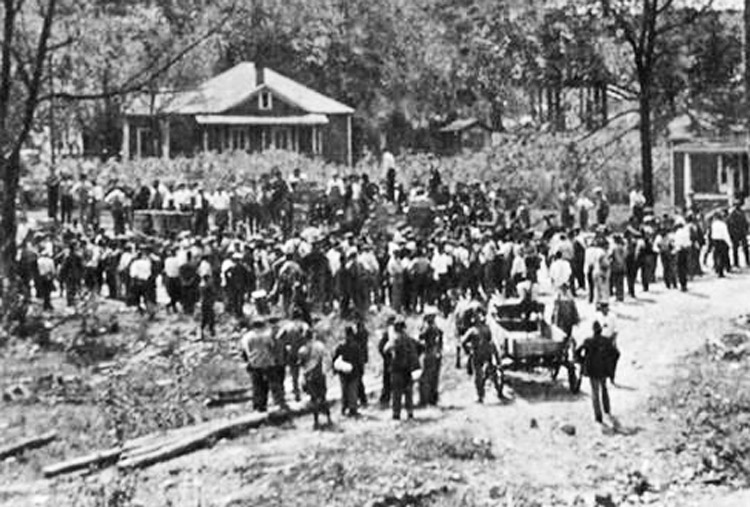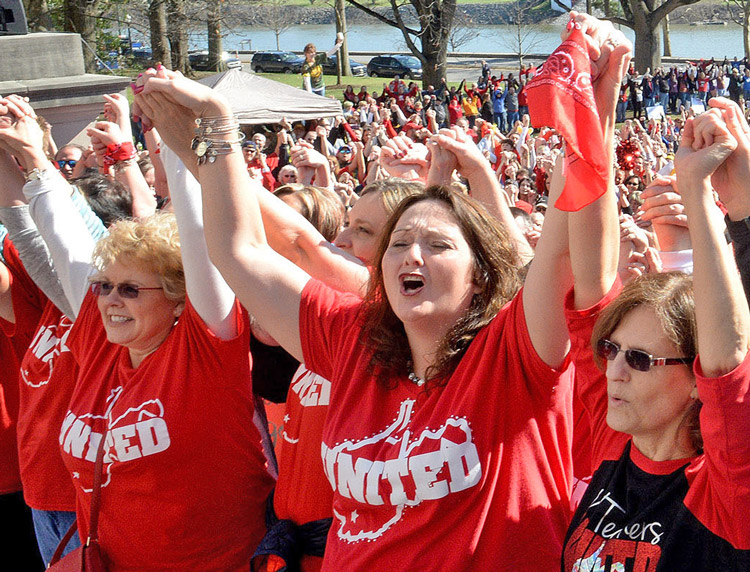Over Labor Day weekend in West Virginia, dozens of commemorations, including rallies, presentations, and re-enactments, marked the 100th anniversary of the Battle of Blair Mountain. This was one of the biggest armed conflicts ever fought between unionists and the bosses’ thugs backed by state forces.
Among the commemorations was a 45-mile march Sept. 3-5 led by United Mine Workers of America President Cecil Roberts that retraced the route thousands of miners took in 1921 from Marmet, West Virginia, to Blair Mountain in Logan County.
Since the late 1800s, coal bosses in Mingo, Logan and McDowell counties in West Virginia had enforced a repressive company-town setup on miners and their families.
Miners work using leased tools and were paid low wages in “scrip,” which could only be used at company stores. Safety conditions were deplorable. And the mine operators had kept unions out of the region through intimidation and violence.
Companies compelled workers to sign “yellow dog contracts,” pledging not to organize, and they used armies of private detectives to harass striking miners.
On May 19, 1920, Baldwin-Felts detectives arrived in the town of Matewan to evict union miners from houses owned by the Stone Mountain Coal Company. They were met by Matewan Mayor Cabell Testerman and a pro-union sheriff, Sid Hatfield, who had raised a small posse to block them.
A gunfight ensued with casualties on both sides. Seven Baldwin-Felts agents were killed along with Testerman and two local miners.
This helped fuel a UMWA organizing drive that expanded rapidly, winning thousands of new members. The miners struck in the summer of 1920. The coal operators responded with violent attacks on union miners, arresting and jailing hundreds of union supporters. This company offensive culminated in the Aug. 1, 1921, assassination of Sid Hatfield as he entered the McDowell County Courthouse to face charges stemming from the Matewan battle.
Within days thousands of union supporters — Black, Caucasian, citizen, and immigrant — converged on Marmet, a small town near Charleston. With UMWA organizers Frank Keeney and Fred Mooney in the front ranks, the miners, armed with rifles and shotguns, began their march Aug. 24 to Mingo County to free imprisoned unionists.
The marchers passed through Kanawha and Boone counties without incident. But once they reached Logan County they met stiff company resistance, organized by Logan County Sherriff Don Chafin, who entrenched his thugs along the side of the 2,000-foot-high Blair Mountain backed up by machine-gun nests.
The miners wore red bandanas around their necks to distinguish themselves from the enemy, earning the name Red Neck Army. They fought fiercely to break through Chafin’s defenses, defying withering machine-gun fire and aerial bombardment from three biplanes that dropped tear gas and pipe bombs on them.
The battle ended only when federal troops arrived, swelling to 2,100 army infantry Sept. 2. Fighting between miners and Chafin’s thugs ended three days later as the miners — many of whom were veterans of the first imperialist world war — didn’t want to take on the army troops. The numbers killed remain unknown. UMWA members in Mingo continued their strike for another year, camped out in tents along the Tug River.
Although the miners didn’t achieve their goal and many were framed up and jailed on treason charges, their actions inspired hundreds of thousands and helped lay the groundwork for the organization of miners by the UMWA in Logan, Mingo, and McDowell counties a decade and a half later, amid the rise of the Congress of Industrial Organizations — a fighting social movement. The West Virginia Mine Wars Museum opened in Matewan in 2015, presenting exhibits about this and other UMWA battles. One thing it shows is “how women were critical to the story,” museum director Mackenzie New-Walker told the Charleston Gazette-Mail. “They helped break up railroad tracks, they helped fight off scab workers.”
Some 100 years later the red bandana worn by miners marching to Blair Mountain “has reemerged as a symbol of solidarity,” New-Walker noted. “We saw teachers wearing it during the teachers’ strike” in West Virginia in 2018.



